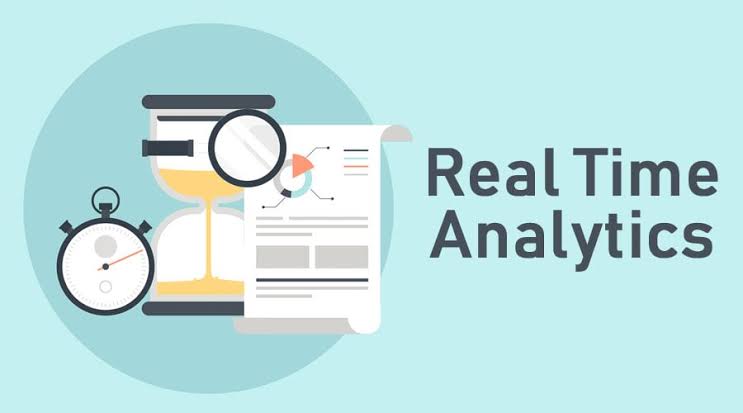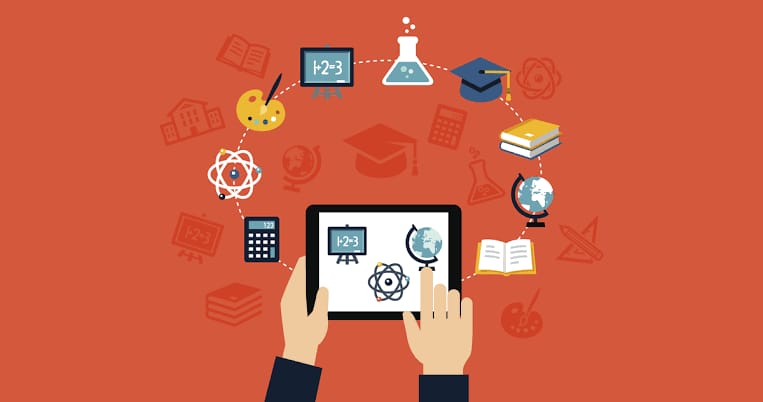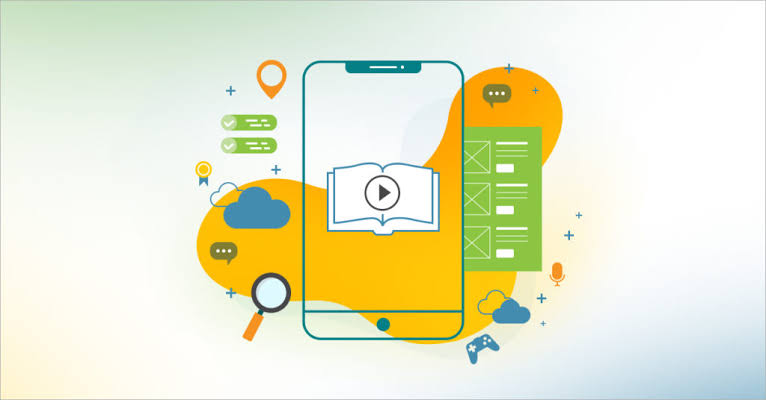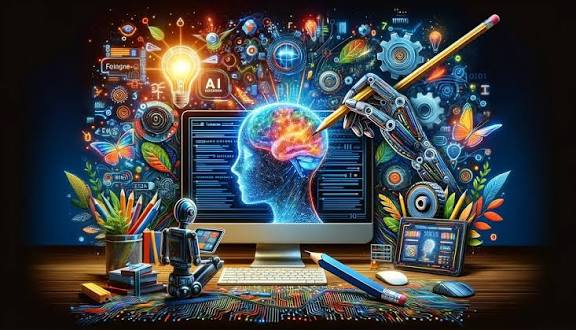
Real-Time Data Analytics: The Key to Smart Cities and Efficient Services
Real-time data analytics is vital for smart cities, enabling efficient urban management by processing instant data from various sources. It improves public transport, energy use, waste management, and emergency response, creating safer, cleaner, and more responsive environments. Despite challenges like privacy and costs, its integration with AI promises a future of highly efficient, autonomous city services.
✨ Raghav Jain

Introduction
As urban populations grow rapidly, managing cities efficiently becomes increasingly complex. The concept of smart cities aims to use technology to improve the quality of life, reduce costs, and enhance sustainability. At the heart of this transformation lies real-time data analytics—the process of collecting, processing, and analyzing data as it is generated.
Real-time data analytics enables city planners, service providers, and governments to make quick, informed decisions. By harnessing live data streams from sensors, devices, and citizens, smart cities can optimize traffic flow, manage resources efficiently, enhance public safety, and deliver better services.
This article explores how real-time data analytics is revolutionizing urban management, the technologies involved, and practical examples of its impact on city life. yes like this , now provide this topic in 1500 words in single paragraph “Real-Time Data Analytics: The Key to Smart Cities and Efficient Services"
The vision of "Smart Cities" transforming urban living from a reactive to a proactive and optimized experience hinges critically on one fundamental technology: Real-Time Data Analytics. This isn't merely about collecting vast amounts of information; it's about the instantaneous ingestion, processing, analysis, and actionable interpretation of continuous data streams generated from myriad sources across the urban landscape. By leveraging sophisticated algorithms, artificial intelligence (AI), machine learning (ML), and the ubiquitous Internet of Things (IoT), real-time data analytics empowers city administrators to make informed, immediate decisions that enhance efficiency, improve public services, optimize resource allocation, and ultimately elevate the quality of life for urban dwellers. It represents a paradigm shift from traditional, often sluggish, data analysis to dynamic, on-the-fly insights that enable cities to respond to challenges as they unfold, predict future needs, and manage complex urban systems with unprecedented agility and precision.
One of the most prominent applications of real-time data analytics in smart cities is in traffic management and urban mobility. Traditional traffic systems rely on fixed timings or historical data, leading to inevitable congestion. In contrast, smart cities deploy an intricate network of IoT sensors embedded in roadways, traffic lights, and public transport vehicles, coupled with surveillance cameras and GPS data from mobile devices. This constant influx of real-time traffic volume, speed, and congestion data allows for dynamic adjustments to traffic signal timings, rerouting guidance for drivers, and optimized public transportation schedules. For example, if an accident occurs, real-time analytics can instantly detect the blockage, alert emergency services, adjust nearby traffic lights to facilitate rapid response, and update navigation apps to divert traffic, minimizing gridlock and reducing travel times. Predictive analytics, driven by real-time data, can even forecast potential congestion hotspots before they fully materialize, allowing for pre-emptive adjustments. This not only makes daily commutes smoother but also reduces fuel consumption, carbon emissions, and traffic-related stress, directly impacting environmental sustainability and citizen well-being.
Beyond traffic, real-time data analytics significantly enhances public safety and emergency response. Smart cities utilize real-time feeds from CCTV cameras, acoustic sensors (for detecting gunshots or screams), social media monitoring, and even wearable devices. This data is fed into AI-powered analytics platforms that can identify unusual patterns, detect suspicious activities, or pinpoint the exact location of an emergency. For instance, in a public safety scenario, real-time data can enable law enforcement to rapidly identify and respond to incidents, deploy resources more effectively, and even provide predictive policing insights into potential crime hotspots based on historical and real-time environmental factors. During large public gatherings, crowd monitoring using real-time video analytics can detect dangerous crowd densities or unusual movements, triggering alerts to manage crowd flow and prevent stampedes. In the event of a natural disaster, real-time data from weather sensors, flood monitoring systems, and citizen reports can provide immediate situational awareness, enabling emergency services to prioritize rescue efforts, evacuate vulnerable areas, and allocate resources where they are most needed, potentially saving lives and minimizing damage.
Efficient resource management, encompassing energy, water, and waste, is another critical area transformed by real-time data analytics. Smart grids leverage real-time data from smart meters, IoT sensors in power lines, and renewable energy sources to monitor energy consumption patterns, identify inefficiencies, detect outages, and dynamically balance supply and demand. This allows for optimal energy distribution, reduces wastage, and facilitates the seamless integration of renewable energy into the grid. Similarly, in water management, sensors deployed throughout the water network can monitor water pressure, flow, and quality in real-time, instantly detecting leaks, identifying contamination, and optimizing water distribution to prevent shortages or overflow. Smart waste management systems use sensors in bins to monitor fill levels in real-time, allowing waste collection routes to be optimized, reducing fuel consumption for waste trucks, and ensuring timely collection before bins overflow, leading to cleaner streets and more efficient operations. This immediate feedback loop ensures that precious resources are utilized judiciously, contributing to urban sustainability and reducing operational costs.
Furthermore, real-time data analytics plays a pivotal role in environmental monitoring and public health. Networks of air quality sensors can provide real-time data on pollutants, enabling authorities to issue public health advisories, identify pollution sources, and implement targeted interventions. Noise sensors can monitor sound levels, helping to manage urban noise pollution. During public health crises, real-time data from hospitals, clinics, and even anonymized mobile phone data can help track disease outbreaks, identify infection hotspots, manage resource allocation (e.g., hospital beds, medical supplies), and inform public health policies with unprecedented speed and accuracy, as demonstrated during recent global health challenges.
The benefits of real-time data analytics extend to citizen services and urban planning. Real-time feedback mechanisms, through dedicated city apps or social media monitoring, allow citizens to report issues like broken streetlights, overflowing bins, or potholes, with city services able to respond promptly. This fosters greater citizen engagement and satisfaction. For urban planning, real-time insights into demographic shifts, public transport usage patterns, and land use can inform infrastructure development, urban renewal projects, and zoning regulations, ensuring that cities evolve in a way that truly serves the needs of their growing populations. This data-driven approach moves planning from static models to adaptive, dynamic blueprints for urban development.
However, realizing the full potential of real-time data analytics in smart cities is not without its challenges. The sheer volume, velocity, and variety of data generated demand robust, scalable, and high-performance data infrastructure, including cloud computing, edge computing, and 5G connectivity for low-latency data transmission. Data privacy and security are paramount concerns, as sensitive citizen data is continuously collected; robust encryption, anonymization techniques, and stringent data governance policies are essential to build public trust and prevent misuse. Interoperability between disparate city systems and data sources is also a significant hurdle, requiring standardized data formats and communication protocols. Finally, the skills gap – a shortage of data scientists, AI engineers, and urban planners capable of effectively leveraging these technologies – needs to be addressed through education and training initiatives.
Despite these challenges, the transformative power of real-time data analytics is undeniable. It is the connective tissue that binds various smart city initiatives, transforming raw data into actionable intelligence. By providing immediate insights into urban dynamics, it empowers cities to transition from reactive problem-solving to proactive management, fostering efficiency, enhancing public safety, optimizing resource utilization, and ultimately creating more livable, sustainable, and responsive urban environments for all. As cities worldwide continue to grapple with urbanization, climate change, and evolving citizen expectations, real-time data analytics will remain the undisputed key to building the truly intelligent and efficient cities of the future.
Understanding Real-Time Data Analytics
Real-time data analytics refers to the capability to process and analyze data immediately after it is collected. Unlike traditional analytics, which works on historical data, real-time analytics delivers insights instantly, enabling timely action.
Key Components:
- Data Collection: Continuous gathering of data from IoT devices, cameras, social media, GPS, and more.
- Data Processing: High-speed computation and filtering to extract meaningful information.
- Data Visualization: Dashboards and alerts that present insights in an accessible format.
- Decision Making: Automated or human-led actions based on analyzed data.
Real-time analytics supports situational awareness, allowing smart cities to respond dynamically to changing conditions.
Role of Real-Time Data Analytics in Smart Cities
1. Traffic Management
Smart sensors and cameras monitor traffic density and speed. Analytics predict congestion and adjust traffic signals dynamically to improve flow and reduce commute times.
2. Public Safety and Emergency Response
Real-time data from surveillance, social media, and emergency calls help detect incidents early. Police and rescue teams can be dispatched immediately, improving response time and saving lives.
3. Energy Management
Smart grids use real-time consumption data to balance load, reduce waste, and integrate renewable energy efficiently. This lowers costs and carbon footprints.
4. Waste Management
Sensors in garbage bins notify when they are full. Analytics optimize collection routes, saving fuel and reducing pollution.
5. Water Management
Real-time monitoring detects leaks and controls water distribution efficiently, ensuring sustainable usage.
6. Public Transport Optimization
Live tracking of buses and trains enables accurate arrival predictions, reduces wait times, and adjusts schedules based on demand.
Technologies Enabling Real-Time Analytics in Smart Cities
Internet of Things (IoT)
IoT devices embedded in infrastructure collect continuous data streams from the environment, vehicles, and utilities.
Cloud Computing
Cloud platforms provide scalable computing power and storage to process vast amounts of data quickly.
Artificial Intelligence (AI) and Machine Learning (ML)
AI algorithms analyze data patterns, predict outcomes, and automate decision-making processes.
Big Data Platforms
These platforms integrate data from diverse sources, handling volume, velocity, and variety efficiently.
5G Networks
High-speed, low-latency networks ensure real-time data transmission from devices to analytics platforms.
Benefits of Real-Time Data Analytics for Efficient City Services
Improved Decision-Making
Authorities gain instant insights to tackle problems proactively rather than reactively.
Cost Savings
Optimized resource allocation reduces operational expenses in energy, water, and waste management.
Enhanced Citizen Experience
Efficient public transport, safer streets, and cleaner environments improve daily life for residents.
Environmental Sustainability
Better management of utilities and traffic lowers emissions and conserves natural resources.
Economic Growth
Smart city innovations attract businesses and investors by creating a tech-forward, livable environment.
Real-Life Examples of Real-Time Analytics in Smart Cities
Singapore
Singapore’s Smart Nation initiative uses real-time data to monitor traffic, manage utilities, and enhance public safety, creating a seamlessly connected urban environment.
Barcelona
Barcelona employs sensors for smart parking, lighting, and waste collection, reducing energy consumption by 30% and increasing public service efficiency.
New York City
NYC uses real-time analytics to track subway delays, optimize snow removal, and monitor air quality, providing residents with better information and services.
Amsterdam
The city’s smart grid and water management systems use real-time data to conserve resources and improve sustainability.
Challenges and Considerations
Data Privacy and Security
Handling vast amounts of personal and sensitive data demands robust security measures and transparent privacy policies.
Data Integration
Combining data from multiple sources and formats can be complex and requires standardization.
Infrastructure Costs
Deploying sensors, networks, and analytics platforms involves significant investment and maintenance.
Technical Expertise
Skilled professionals are needed to manage analytics systems and interpret results effectively.
Citizen Engagement
Public trust and participation are essential for the success of smart city initiatives.
Steps to Implement Real-Time Data Analytics in Cities
1. Identify Key Focus Areas
Start with specific services such as traffic, energy, or waste management for pilot projects.
2. Deploy IoT Sensors
Install necessary hardware for data collection across chosen areas.
3. Build Data Infrastructure
Invest in cloud platforms and big data tools to handle analytics.
4. Develop AI Models
Create algorithms to process data and generate actionable insights.
5. Establish Governance
Set up policies for data privacy, sharing, and citizen engagement.
6. Monitor and Optimize
Continuously evaluate system performance and adapt based on feedback.
Future Trends in Real-Time Data Analytics for Smart Cities
- Edge Computing: Processing data closer to where it is collected for faster response times.
- Predictive Analytics: Anticipating city needs before they arise to prevent issues.
- Integrated Urban Platforms: Unified dashboards combining multiple city services.
- Citizen-Centric Apps: Real-time updates and participation tools for residents.
- Sustainability Focus: Analytics prioritizing carbon reduction and green initiatives.
Conclusion
Real-time data analytics is the cornerstone of smart cities and the key to delivering efficient, responsive urban services. By enabling quick decision-making, optimizing resources, and enhancing citizen experiences, it transforms how cities operate and grow.
For cities aiming to become smarter, investing in real-time analytics technologies and infrastructure is not optional—it’s essential. The future of urban living depends on our ability to harness live data and turn it into meaningful action.
As urban challenges grow, real-time analytics offers a promising path toward sustainable, efficient, and connected cities where people can live, work, and thrive smarter than ever before.
Q&A Section
Q1: What is real-time data analytics?
Ans: Real-time data analytics is the process of collecting, processing, and analyzing data instantly as it is generated to enable immediate decision-making.
Q2: How does real-time data analytics contribute to smart cities?
Ans: It helps smart cities monitor traffic, manage resources efficiently, enhance public safety, and improve urban services by providing timely insights.
Q3: What types of data are analyzed in real-time for smart cities?
Ans: Data from sensors, cameras, social media, public transport systems, and IoT devices are commonly analyzed in real-time.
Q4: How does real-time data analytics improve public transportation?
Ans: It enables dynamic route optimization, reduces waiting times, and enhances passenger experience by tracking vehicle locations and traffic conditions.
Q5: What role does real-time analytics play in emergency response?
Ans: It allows faster detection of emergencies, better resource allocation, and quicker response times to incidents like accidents or natural disasters.
Q6: Can real-time data analytics help in energy management?
Ans: Yes, it optimizes energy consumption by monitoring usage patterns and adjusting supply accordingly to reduce waste and costs.
Q7: How do smart waste management systems use real-time analytics?
Ans: These systems track bin levels and collection routes to schedule pickups efficiently, reducing operational costs and pollution.
Q8: What challenges exist in implementing real-time data analytics in cities?
Ans: Challenges include data privacy concerns, high infrastructure costs, and the need for robust data processing capabilities.
Q9: How does real-time analytics support environmental monitoring?
Ans: It provides instant data on air quality, noise levels, and pollution, enabling prompt action to maintain a healthy environment.
Q10: What is the future potential of real-time data analytics in urban services?
Ans: Future potential includes more predictive analytics, AI integration, and fully autonomous city management systems for enhanced efficiency.
Similar Articles
Find more relatable content in similar Articles

Top Educational Apps That Boos..
Educational apps are transfor.. Read More

Smart Study to Smart Career: ..
Smart study and career apps a.. Read More

From Classroom to Career: App..
Skill-building apps help stud.. Read More

The Future of Social Media Ma..
AI is transforming social med.. Read More
Explore Other Categories
Explore many different categories of articles ranging from Gadgets to Security
Smart Devices, Gear & Innovations
Discover in-depth reviews, hands-on experiences, and expert insights on the newest gadgets—from smartphones to smartwatches, headphones, wearables, and everything in between. Stay ahead with the latest in tech gear
Apps That Power Your World
Explore essential mobile and desktop applications across all platforms. From productivity boosters to creative tools, we cover updates, recommendations, and how-tos to make your digital life easier and more efficient.
Tomorrow's Technology, Today's Insights
Dive into the world of emerging technologies, AI breakthroughs, space tech, robotics, and innovations shaping the future. Stay informed on what's next in the evolution of science and technology.
Protecting You in a Digital Age
Learn how to secure your data, protect your privacy, and understand the latest in online threats. We break down complex cybersecurity topics into practical advice for everyday users and professionals alike.
© 2025 Copyrights by rTechnology. All Rights Reserved.